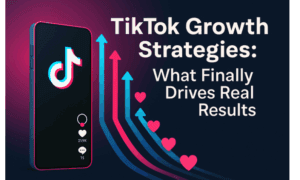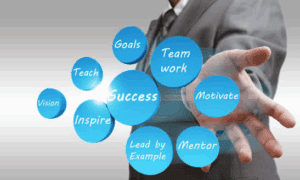Motivation is the driver of human activity. All these flows in our brain that direct us to do something are circuits, programming us to perform tasks, and they determine whether we’ll reach success in that. So, understanding how to manage these circuits is the essential task of any corporate manager.
This article won’t dive into the physiological basics of motivation. Instead, we’ll see the essence of employee engagement, its approaches, and benefits. Lastly, we’ll overview learning management systems, such as CleverLMS, and see which motivational instruments they offer. In the end, you’ll be able to deploy this knowledge to improve every aspect of your corporate activity!
What is employee engagement
In the beginning, there was motivation. The directed desire to complete something, that is driven by possible benefits that can arise from reaching it. Fear of punishment was often used to motivate people to do something, too, but we consider these practices unethical and inherently wrong. Moreover, modern studies suggest that negative motivation, the one arising from the fear of punishment, leads to biases and negative emotions, hindering learning and creativity and decreasing overall productivity greatly.
So, we’ll focus on the positive motivation.
Broadly speaking, employees tend to do something for two reasons: the engaging process and the desired result. So, everything we can say about motivation should be related to these two processes. On that, we’ll stay and continue our article.
Employee engagement strategies
We need to satisfy both conditions of positive motivation: make the process engaging and provide a desired outcome. The former includes various interactive elements and the interest of learning materials to the learner, so they will feel pleasure when exploring them and completing tasks based on them. The latter is about having the reward for completing tasks, such as the ability to earn more money or find a better place in life.
In addition, it’s worth mentioning that motivation can be divided into two categories: internal and external. The former is the intrinsic desire of an employee to reach something, while the latter refers to the various stimuli of the environment, guiding and directing an employee to reach something. Both of them can be adjusted.
Some viable employee engagement ideas, based on the peer-reviewed research, are the next ones.
- Webinars and other online events can be beneficial for knowledge exchange and presenting something new to your company.
- Debates, brainstorms, and other communication practices enable you to connect with your employees and make them exchange their ideas, improving teamwork and possibly reaching beneficial conclusions.
- Workshops and other creative activities are good for enhancing employees’ creative potential so they can reach more in their daily workflows.
Benefits of employee engagement
It is obvious that motivated employees are far more beneficial for the company. We’d better classify all these advantages, so you’ll see the milestones you need to reach.
🛠️ Increased efficiency is the direct consequence of engaged and concentrated work.
🚀 Ideation and creativity of the motivated employees far exceed those who aren’t engaged in the company processes. They are in those processes, feel and see them as the whole picture, so their ideas will work better and possibly benefit the company, eventually.
📋 Self-organization and responsibility are essential for modern companies, where employees usually need to organize their time efficiently and often work remotely. If they know their part in the company’s workflows, they’ll certainly organize them better.
☀️ Happiness is an important element of workflows, too, as engaged and satisfied employees are much more productive. They feel fulfilled and realized in life, which contributes to their happiness greatly!
Now, when you see why is employee engagement important and which strategies to apply here, we can pay attention to the optimization of the process. Learning management systems (LMS) provide various functionalities for this reason, so let’s dive into them!
Employee engagement software
As the basics of human motivation are known, specific tools can be used for automatizing and streamlining everything related to it at the workplace. LMSs store the company’s learning information in a single base and provide a robust interface for learning. CleverLMS, for example, provides fully customized mobile applications and web platforms for each customer that orders it. Employee engagement is reached using interactive tasks integrated into course routes and a scoring system where learners may spend scores to buy gifts provided by the company.
Other tools have various features for that purpose that we’ll review in a moment. So, what should a good employee engagement platform offer to you?
- Social learning is based on the fact that cohorts of learners remember information better and take more efficient conclusions from it due to the social and emotional nature of the human brain and personality. Many peer-reviewed studies, such as this one by Jones et al., explored these benefits. Examples of social learning-based platforms are Degreed and 360Learning, and they are instrumental if you want to enhance your teamwork.
- Gamification is based on another fact: the tendency of our brains to be engaged in responsive and interactive processes that stimulate regular reinforcement. That’s why promoting the interactive learning competition with quests and bright elements, related to the subject taught, is highly beneficial, as various studies conclude, such as this one by Wang et al. Almost all LMSs have at least some gamification features, while platforms like Axonify ground all learning processes in them.
- Personalized development includes providing customized learning content and journeys for each LMS user. By studying the learning habits, preferences, skills, and responsibilities of each learner, a platform can suggest which courses and materials are the best fit for them and help managers make decisions about that. Platforms like Cornerstone and the already mentioned CleverLMS are examples of tools using primarily this approach.
Winning the competition
A successful company can drive and maintain continuous motivation flows in its employees’ brains. For that, evaluate what your employees want and how they can reach it. Make all your work and learning processes engaging and personalize them for each employee.
Choose a proper employee engagement tool that will use the power of gamified, social, and
personalized learning. With that, you’ll create a robust innovative environment where all your teams will improve their productivity and satisfaction, and you all will thrive!
Autor: by Veronika Sinitsa



































